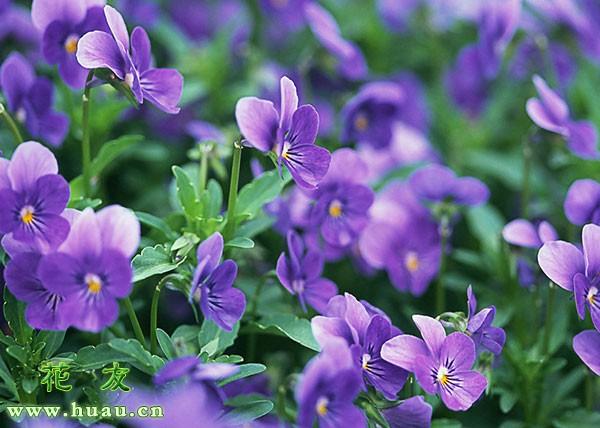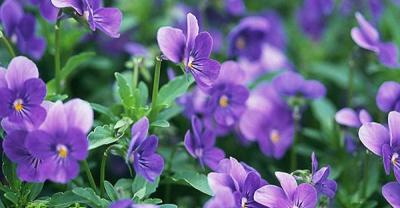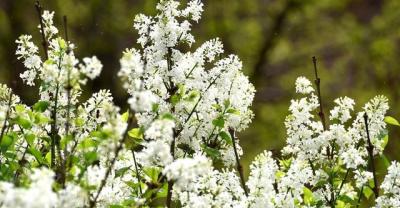Cultivation and cultivation of Violet
Violet, also known as grass violets, sweet-scented osmanthus, cruciferous violets, is a biennial or perennial herbaceous flower. Native to the Mediterranean coast of Europe, it is commonly cultivated in gardens in various countries. Like cold and cool, sufficient light environment, but also slightly resistant to semi-shade. The suitable temperature for growth is 15 ℃-18 ℃ in daytime and about 10 ℃ at night. Can withstand the low temperature of-5 ℃ in winter. Require loose, fertile, deeply moist neutral or slightly acidic loam. Perennial herbaceous flowers are often cultivated biennial. Sowing and propagation in autumn, the optimum temperature for germination was 16 ℃-18 ℃, and germinated in about 4 days. It overwintered in a cold bed, planted in the open field in the following spring, and blossomed around May 1. Annual varieties can be sown in four seasons in cool areas in summer and can provide flowers for the year. Cultivation should not be too dense, and attention should be paid to fertilization during the growth period. If properly maintained, it can blossom in mid-April. After flowering, the flower branches were cut off and fertilized for 1 to 2 times, and the flower could bloom for the second time from June to July.
Violets are usually sown in the autumn of the first year and bloom in the spring of the following year. This flower plant is 30-50 cm tall, the stem is erect, much branched, and the basal shoot is Lignified. Leaves broad, long elliptic or oblanceolate, apex obtuse. Racemes terminal and axillary, pedicels stout, flowers with purplish red, light red, yellowish, white and other colors, single flowers can seed, double flowers do not seed, fruit is siliques cylindrical, seeds winged. The flowering period is from March to May and the fruit ripening stage is from June to July. The fruit is a pod, dehiscing when ripe.

Violet flowers are luxuriant, colorful and fragrant, with long flowering periods and long inflorescences. It is loved by many people who plant flowers and is suitable for potted plants and ornamental plants. It is suitable for arranging flower beds, steps, flower paths, or for potted flowers and cut flowers.
Violet is native to southern Europe and is widely cultivated in southern China. This flower is cold and cool, cold-resistant and shady, and is afraid of waterlogging. It is suitable for growing in an environment with high position, exposure to sunlight, ventilation and good drainage. Avoid muggy heat, it is easy to be harmed by diseases and insects when it is hot and moldy and poorly ventilated.
The reproduction of violets is dominated by sowing. In the central part of China, the seeds are usually sown in the open field in the middle of September. The single flower should be selected as the female parent, because the double flower lacks pistil and can not bear seeds. If the seed is collected from the potted female parent, the petal rate of the second generation is higher. The basin soil should be moist before sowing, cover a thin layer of fine soil after sowing, and no longer water it. If the basin soil is dry within half a month, the basin can be placed in half of the water and moistened from the bottom of the basin. Pay attention to shading after sowing, and seedlings can emerge in the right side of the plant in 15 days.
Before the true leaves are unfolded, the seedlings can be planted in a bed with a row distance of 6 × 8 cm. When pulling out the seedlings, they should be careful not to hurt their roots and bring soil balls. Before planting, some dried pig and chicken manure should be put into the soil as base fertilizer. After planting, pour enough fixed root water, shade but not sulk; potted growers should move to a cool and ventilated place, and then move to a sunny place after survival, watering every other day, applying rotten liquid fertilizer every 10 days, and stop applying immediately after seeing flowers. For tall varieties, it is appropriate to cut off flower branches after flowering, and then apply dilute liquid fertilizer 1-2 times, which can promote the re-emergence of lateral branches. before the arrival of the first frost, the ground should be dug up with soil masses and hoarded into sunny beds or upper flowerpots for overwintering.
For more flower growing experience, succulent cultivation, bonsai appreciation, and communication with flower friends, please move to Huayou WeChat community: http://m.huau.cn, or follow WeChat account: huaucn, join Huayou WeChat group, please add Wechat private number: wwwhuaucn.
- Prev

Cultivation and Maintenance of Mandarin Jasmine
Description: Plant height 70- 150 cm. Leaves alternate, long lanceolate, flowers solitary or 2-3 clustered in leaf axils, high-footed saucer-shaped flowers, corolla pentaphorous, early blooming.
- Next

Planting method and nutritional value of raspberry
Raspberries are perennial shrubs. It belongs to clumps, and its branches grow obliquely or lie long for life, generally 3-4 meters long. Its fruit is a berry, and the fruit.
Related
- Fuxing push coffee new agricultural production and marketing class: lack of small-scale processing plants
- Jujube rice field leisure farm deep ploughing Yilan for five years to create a space for organic food and play
- Nongyu Farm-A trial of organic papaya for brave women with advanced technology
- Four points for attention in the prevention and control of diseases and insect pests of edible fungi
- How to add nutrient solution to Edible Fungi
- Is there any good way to control edible fungus mites?
- Open Inoculation Technology of Edible Fungi
- Is there any clever way to use fertilizer for edible fungus in winter?
- What agents are used to kill the pathogens of edible fungi in the mushroom shed?
- Rapid drying of Edible Fungi

